April 17-24 2002
Biodiversity - Invasive Species - Mass Extinctions
Ellen Thomas
April 17-24 2002
Biodiversity - Invasive Species - Mass Extinctions
Ellen Thomas
Organisms are introduced into a foreign ecosystem, by humans, either intentionally (e.g., crop plants, feed animals), or unintentionally. Introduced within a strange ecosystem, where the inhabitants are adjusted to each other and their environments, most introduced species die, unless taken care of by humans. But, particularly if ecosystems are already disturbed, and particularly in warm climates (no frost), some thrive and become pests.
In their native country these organisms are not 'pests', i.e., organisms that dominate ecosystems, becsue they are kept to lower population numbers by such factors as:
We expect that the effect of the transport of organisms all over the
world by humans will be a decrease in global diversity. Such
transport results in effective presence of one genepool the world
over, similar to the effect of having all land on the earth combined
within one continent. This would mean that all species in the world
would have to compete with all other species in the same niche. In
the world as we know it, there are very different animals/plants
occupying the same niche in different continents. For instance,
kangaroos fill the niche 'large land herbivore' in Australia, which
niche is filled by antelopes, zebras and the like in Africa, by
bisons in America. Similarly, North and South America had
independently evolved mammalian faunas, and when these lands were
connected about 3-2 million years ago by the formation of the isthmus
of Panama, the connection was followed by 'The
Great American Interchange'. The
overall diversity in the combined continents decreased, when some
animals moved from South to North (e.g., opossum), many moved from
North to South (e.g. jaguars).
Definition of Invasive species ('The
Nation's Invasive Species Information System')
Plants, animals, and microbes not native to a region which, when introduced either accidentally or intentionally, out-compete native species for available resources, reproduce prolifically, and dominate regions and ecosystems. Because they often arrive in new areas unaccompanied by their native predators, invasive species can be difficult to control. Left unchecked, many invasives have the potential to transform entire ecosystems, as native species and those that depend on them for food, shelter, and habitat, disappear.
Invasive species: how serious a problem are they?
Examples of invasive species in the US:
Purple loosestrife, a highly aggressive plant invader of wetlands, can produce up to 2.7 million seeds per plant yearly, and spreads across approximately 480,000 additional hectares of wetlands each year. Ecosystem upset, since local fauna does not eat the plant.
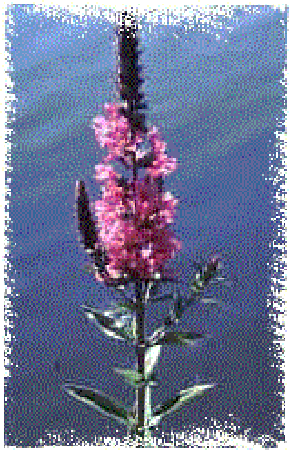
The brown tree snake, an invasive originating in the South
Pacific and Australia, has extirpated 10 of 13 native bird species, 6
of 12 native lizard species, and 2 of 3 bat species on the island of
Guam.
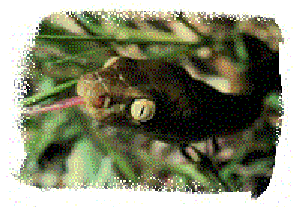
The glassy-winged sharpshooter arrived in California, carries
a plant bacterium Xylella fastidiosa, which causes a disease
that poses a major threat to grape, raisin, and wine industries, and
the tourism associated with them, collectively valued at nearly $35
billion annually.

Euphorbia esula (Leafy Spurge) is a plant that rapidly
covers huge areas of rangeland in the American west, doing damage to
both livestock and wild fauna, because it does not offer nutritious
food to herbivores.
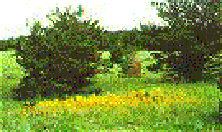
Kudzu vine, introduced as a fast-growing vine to help prevent soil erosion, has become a major pest in the southern US.

Zebra mussels (Dreissena polymorpha) are
fingernail-sized, fresh water mussels native to the Caspian Sea/Black
Sea region of Asia. They are believed to have been transported to the
Great Lakes via ballast water from a trans-oceanic vessel. The
ballast water, taken on in a fresh water European port was
subsequently discharged into Lake St. Clair, near Detroit, where the
mussel was discovered in 1988. They are now down to the Gulf of
Mexico, and made it into Connecticut as well. They are major pests,
covering large areas of lakes and rivers, preventing the
establishment of other species, cover water intakes and clog pipes.
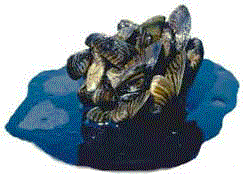
Pacific Islands (including Hawaii) had hundreds of species of snail
which occurred only on these islands (endemic species). The
right-hand picture shows a Hawaiian species of Achatinella;
there were about 42 species of this genus present on the island of
Oahu. The giant African land snail (Achatina
fulica) was introduced in many
islands, with some idea of eating it, but the giant snails escaped
and rapidly started to eat the local snails. Then a second
snail-eating snail species was introduced: Euglandina rosea
(middle picture; the rosy wolf snail), native in Florida-middle
America. This species can eat the giant African snail, but turned out
to eat the local, endemic species much faster than it ever ate any
African snails. On Hawaii, 71% of endemic species are now extinct. On
Tahiti and Moorea many species of the endemic snail Partula
are extinct, but a handful (from the 64 species of Partula
originally present on Tahiti) are still hanging on.
Information on the rosy wolfsnail


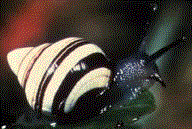
One should keep in mind, though, that nearly all U.S. crop and livestock species are non-indigenous to the land. Non-indigenous crops, livestock species represent >98% of the U.S. food system, ~ $800 billion per year.
What are the Ecological Impacts on invasive
species?
Foreign species in US:
What types of species are invasive in the US?
Stemming the tide:
Solutions to the problems posed by invasive species are not easy tp provide.
As an example of the problems: marine bioinvaders can arrive attached
to ships in many different ways.
The arrival in ballast waters is probably the most serious, since very large volumes of waters (capable of holding millions of larvae) are involved. It is estimated that ~3,000 species per day are transported in ships, which is understandable since about 80% of world's commodities is moved by ship. There are several proposals to do something about this, but international law is involved, and it is extremely complex to force transporters efficiently not to pump ballast waters.
We can thus conclude that invasive species are:
It should also be noted that there is not much support for measures by the 'average citizen' (especially if an invasive animal species is cute, an invasive plant species beautiful), and that the severity of the problem is strongly underestimated.
Return to first lecture on biodiversity